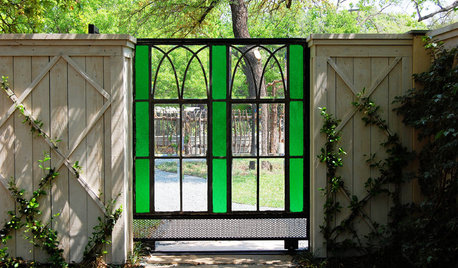growing trees from seed
User
10 years ago
Related Stories

CONTAINER GARDENS8 Easy Container Plants to Grow From Seed
Get beautiful blooms and herbs in summer by starting these choice garden picks from seed in spring
Full Story
GARDENING GUIDESHow to Plant a New Lawn From Seed
Choose from more grass varieties and save money over sod by starting your lawn from seed
Full Story
GARDENING GUIDESSeeds or Seedlings? How to Get Your Garden Started
Growing delicious herbs and vegetables starts with knowing your goals and when you want to plant
Full Story
EDIBLE GARDENSWhy Grow Quince? For Beauty, Fragrance and Old-Time Flavor
Delightfully perfumed fruit and lovely spring blossoms make this apple and pear cousin worth a spot in the garden
Full Story
FRUIT TREESHow to Grow Your Own Persimmons
Sturdy and easy to care for, these trees offer bright fruit through winter — and keeping them in bounds is no sweat
Full Story
WINTER GARDENINGExtend Your Growing Season With a Cold Frame in the Garden
If the sun's shining, it might be time to sow seeds under glass to transplant or harvest
Full Story
SALVAGEReinvent It: An Eclectic Texas Garden Grows From Creative Salvaging
Teardown pieces and upcycled finds turn a next-door lot into a garden brimming with vegetables and originality
Full Story
EDIBLE GARDENSHow to Grow Your Own Peaches and Nectarines
Make gardening a little sweeter with these juicy fruits, which you can eat after plucking or preserve for later
Full Story
EDIBLE GARDENSHow to Grow 10 Favorite Fruit Trees at Home
Plant a mini orchard in fall, winter or early spring to enjoy fresh-off-the-tree fruit the following year
Full Story
GARDENING GUIDESGrow Your Own Privacy: How to Screen With Plants and Trees
Use living walls to lower your home and garden's exposure while boosting natural beauty in your landscape
Full Story






florauk
canadianplant
Related Professionals
Folsom Landscape Architects & Landscape Designers · Fort Lee Landscape Architects & Landscape Designers · Garden City Landscape Architects & Landscape Designers · Buford Landscape Contractors · Allentown Landscape Contractors · Davis Landscape Contractors · Millburn Siding & Exteriors · Oak Creek Siding & Exteriors · Austin Decks, Patios & Outdoor Enclosures · Fort Lee Decks, Patios & Outdoor Enclosures · Hot Springs Village Decks, Patios & Outdoor Enclosures · Lansdale Decks, Patios & Outdoor Enclosures · Mobile Decks, Patios & Outdoor Enclosures · New Albany Decks, Patios & Outdoor Enclosures · South Miami Heights Decks, Patios & Outdoor Enclosuresalexander3_gw
Huggorm
arktrees
UserOriginal Author
floral_uk z.8/9 SW UK
poaky1
floral_uk z.8/9 SW UK
jocelynpei
UserOriginal Author
floral_uk z.8/9 SW UK
UserOriginal Author
scotjute Z8
jocelynpei